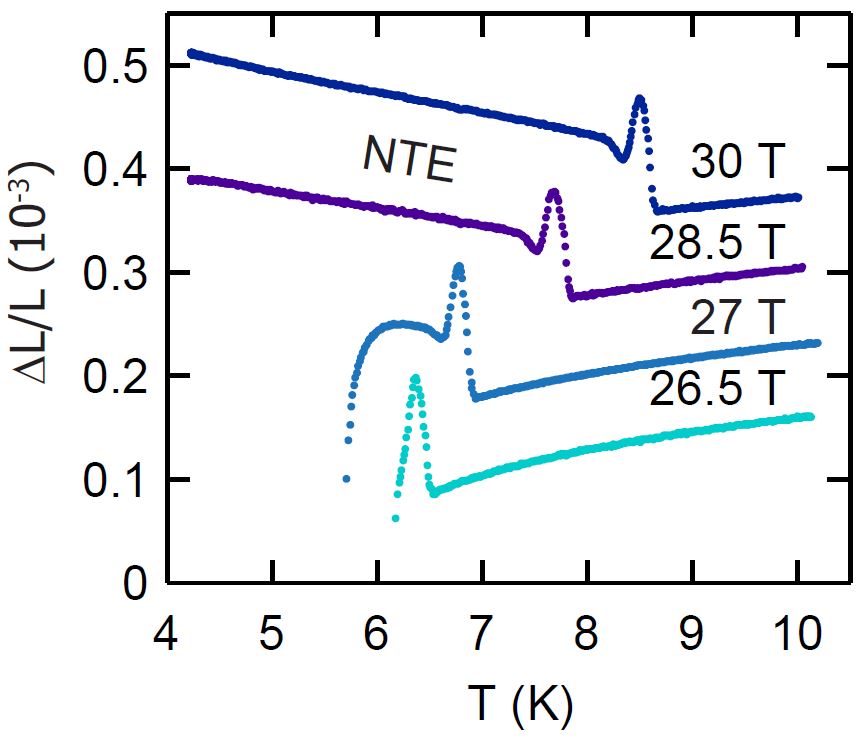Lisa Rossi and Ben Bryant, HFML Nijmegen
Frustrated magnets are materials with competing spin interactions, which cannot be simultaneously satisfied. While these materials have become most famous as a playground for novel phases, such as quantum spin liquids, they also exhibit technologically relevant properties, such as multiferroicity and an enhanced magnetocaloric effect. Negative thermal expansion (NTE) is another unusual phenomenon observed in frustrated magnets, which means that the crystal expands as it cools and which might provide a route for the control of thermal expansion necessary to ensure the performance of high-precision devices.
If there is a strong coupling between the spin and lattice degrees of freedom, the interplay between magnetic field and spin-lattice coupling produces a range of phases in which frustration is partially relieved, an effect known as “order by distortion”. A paradigm for this type of behavior is provided by Cr spinels, which exhibit many different magnetically ordered phases as a function of magnetic field. Many of these systems exhibit NTE, including the spinel CdCr2O4 in zero magnetic field. This suggests that the unusual thermodynamic behavior may have a common origin; however, to date there is no general understanding of this phenomenon or how it is linked to spin-lattice coupling. Moreover, to obtain a complete picture of NTE in spinels, high-precision measurements are also needed for the ordered phases induced by the magnetic field.
We examined the thermal expansion and magnetostriction of CdCr2O4 in magnetic fields up to 30 T. The results were used to determine the respective phase diagram, which we matched to that derived from a microscopic model of spin-lattice coupling. We found that the high-field, half-magnetization plateau phase exhibits enhanced thermal stability compared to theory, characteristic of a strong spin-lattice coupling in this phase. This state also shows a marked NTE, distinct from that observed in zero field (Figure). Starting from the same model of spin-lattice coupling, we developed a microscopic theory of this NTE and identified its origin as being a band of nearly localized magnetic excitations. These results provide a general framework for modeling and predicting NTE in pyrochlore lattices and in frustrated magnets in general.

Figure: Thermal-expansion measurements from 4.2 to 10.4 K in fields up to 30 T, measured on warming, showing transitions from a paramagnetic state to a half-magnetization plateau state and the presence of NTE in the plateau state above 27 T.
Negative Thermal Expansion in the Plateau State of a Magnetically Frustrated Spinel, L. Rossi, A. Bobel, S. Wiedmann, R. Küchler, Y. Motome, K. Penc, N. Shannon, H. Ueda, and B. Bryant, Phys. Rev. Lett. 123, 027205 (2019).
DOI: 10.1103/PhysRevLett.123.027205
Contact: Lisa.Rossi@ru.nl






